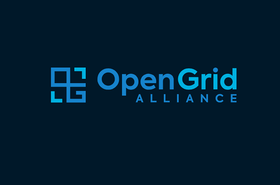When Fastly broke earlier this month, a lot of the Internet went with it. For many people, if was the first time they were even aware of content delivery networks (CDNs). For the rest of us, it was a reminder of just how important they have become.
At the end of the last century, Akamai (the first CDN) began to offerthe first "edge" networking service. Akamai cached web content in locations close to users, to speed up the performance that users saw, and take the load off centralized web servers. Today's Edge servers are designed to serve different applications, but CDNs have evolved in the last 20 years. Is it possible that the Edge will actually be little more than an upgrade of good old CDNs?
Not so Fastly!
CDNs started out cacheing static web pages, but as time has gone by, they have had to handle more kinds of content and even applications. Netflix and other streaming services run their own in-house CDNs, whichare tuned to deliver video fast - and also have a tight break link to billing systems.
Cloudflare has made much play with its ability to protect sites from denial of service attacks, by taking the multiple malicious logins and filtering them out so they never reach the actual target. It's become a widely used CDN for enerprise networks.
When Fastly went down, it wasn't just content sites that disappeared, although a lot of its customers turned out to be major media players like HBO, The New York Times, CNN and The Guardian. Reddit, eBay and the UK Government's site also went dark. Even Amazon (which operates a rival public CDN called Cloudfront) was affected.
What the Fastly failure revealed is that CDNs have developed extensive abilities to run code at the Edge - and a lot of companies are already trusting those functions.
During the last few years, as hype for the Edge has grown, a lot of CDNs have been rebranding themselve as Edge computing resources. Akamai describes itself as "an intelligent Edge platform". Fastly says it's an "Edge cloud platform".
But it's not just a branding exercise, with old players occupying a new buzzword. Both Fastly and Akamai have been adding functions to support "serverless computing" at the Edge. What that means is containers which run their customers' software in the Edge nodes where they have CDN resources.
Akamai introduced this function in its so-called "EdgeWorkers", back in October 2019. Fastly uses the phrase Compute@Edge.
CDNs - a prototype, or the real Edge?
Some analysts have argued that this is not real Edge computing, but an instance where older companies are trying to catch up with the new world. Edge network players including Azion and Section describe the likes of Akamai as "legacy CDNs" who offered "a prototype of Edge compute" and will be replaced by newer services.
But the Fastly fail showed that customers are turning to CDNs for their Edge needs. And the CDNs are boldly staking claims to handle territory which is usually presented as pure-play Edge territory, like the Internet of Things (IoT) where sensors have to be handled remotely by low-latency links before their data is aggregated and dealt with centrally.
Akamai has a service called IoT Edge Connect, and both Cloudflare and Fastly have promised that their networks can protect IoT systems from attack.
The Akamai Edge computing service got a major upgrade this week, to include specialist hardware to handle API calls at the Edge - throwing out the impressive statistic that, the relatively new EdgeWorkers service handled some 300 trillion API requests at the Edge in a single year, 2020.
Some will point to the Fastly failure as evidence that CDNs can't manage the upgrade. There are some who say that the Internet needs fundamental re-architecting to handle Edge computing, instead of applying sticking plaster. The Open Grid Alliance (OGA) led by Vapor IO and VMware is based on the idea that Edge applications need support from more flexible hardware that can route computing where it should happen.
But these approaches tend to need a lot more new Edge hardware, and there's no clear model for the investment which will put it out there.
To me, it looks as if big customers have already voted with their feet. CDNs have the market, and they have the investment. Any more radical approach to Edge won't get started till there's a clearer indication that CDNs can't fill the gap.





